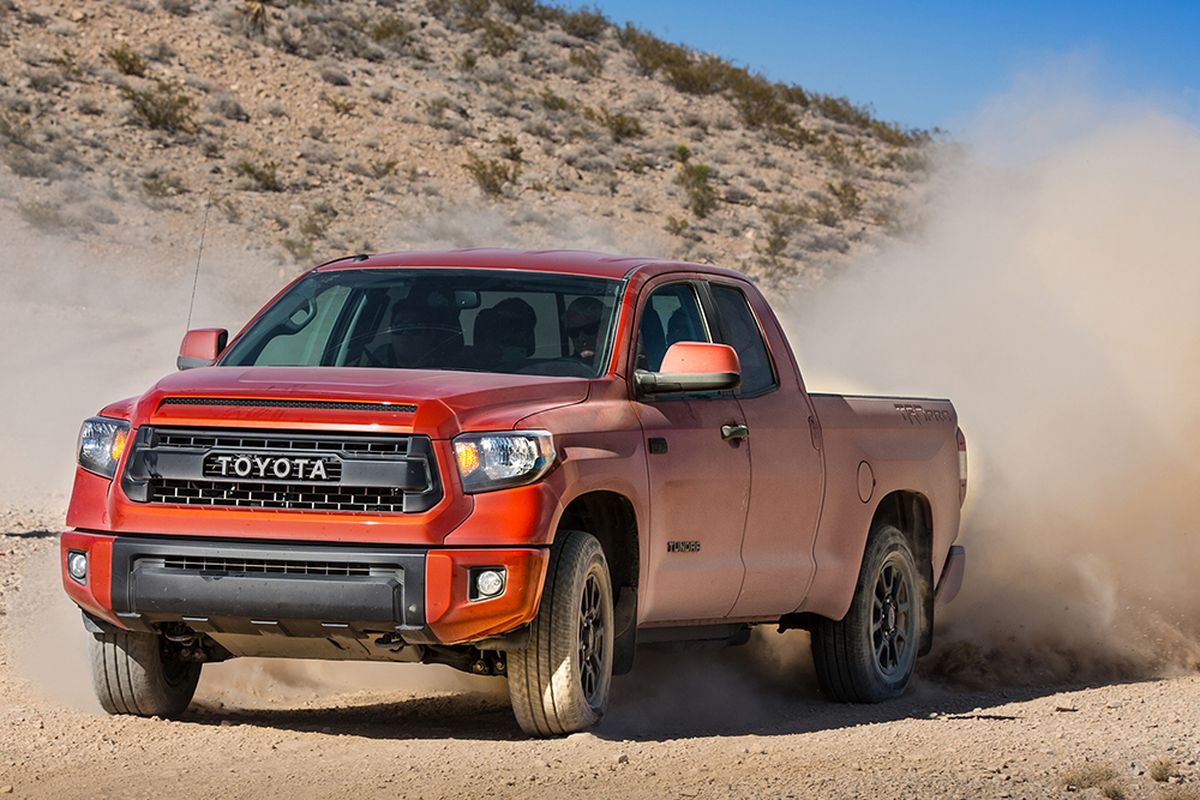Don Adair: Toyota Tundra gets the job done in tough conditions

For weeks, the winding, downhill dirt road between our house and the highway was an ice sheet.
It was treacherous enough that leaving home invoked a three-step ritual: 1) engage the lowest gear available in whatever rig we were driving; 2) take a deep breath; and 3) point rig downhill.
There’s a tried-and-true technique for driving downhill in slippery conditions: brake as little as possible — braking can cause traction loss — and let engine compression slow the vehicle instead.
Engine compression is the force that slows your car when you lift your foot from the brake; the lower the gear, the greater the compression. As opposed to cars and crossovers, which use a single set of gears, trucks and SUVs with 4WD have a second set of low-range gears.
Hence, more compression and more braking action.
Which means today’s tester was a godsend; the 2017 Toyota Tundra is a full-size pickup with available 4WD. It’s available in six trim levels, one of which is the off-road ready TRD Pro.
In addition to its 4WD system, with two-speed transfer case, the TRD Pro runs a set of sticky Michelin all-terrain (not all-season) tires and includes an off-road-ready suspension. Its purpose-built, heavy-duty shock absorbers feature three-stage compression damping, internal hydraulic bump stops and external reservoirs.
Extra-long wheel-travel eases the TRD Pro over boulders and downed trees and underbody skid plates protect the fragile bits below.
At the top of our improvised luge run, I’d engage 4-low and, with the transmission in first gear, let the truck crawl down the icy surface, sans brakes.
The TRD Pro is available in five- or six-passenger double- and crew-cab body styles and features a unique grille, TRD Pro bed-panel stamping, matte black badges and black headlight bezels. Inside, there’s leather upholstery with the TRD logo and red stitching, an eight-way power driver seat, a four-way power front passenger seat, an upgraded 7-inch touchscreen and navigation.
It’s powered by the larger of Tundra’s two available V-8 engines, a 5.7-liter iForce eight that makes 381 horsepower and 400 pound-feet of torque and will tow up to 10,600 pounds.
The base engine is a 4.6-liter V-8 that produces 310 horsepower and 327 pound feet of torque and can tow as much as 6,800 pounds.
All Tundras drive like trucks — i.e., no cushy ride or car-like handling — and, with its lifted suspension and long wheel-travel, the TRD Pro exaggerates the truckiness. An empty bed spells a fair amount of bounce and body lean in corners.
Vague steering-feel and the absence of a solid on-center groove require a certain amount of course correction to stay in-lane.
Tundra is sturdy, strong and capable, but lacks the finesse and the cutting-edge tech of its competitors. A blind-spot monitoring system, rear cross-traffic alert and parking sensors are available on other trims, but not TRD Pro. A rearview camera is standard.
Tundra’s appeal may be less wide-ranging than its competitors’, but few are more capable.
Contact Don at don@dadair.com, or visit www.dadair.com.
2017 Toyota Tundra TRD Pro
Vehicle base price: $30,500
Trim level base price: $42,445
Options: The TRD Pro is a fully equipped trim; our tester came with no options.
Tow rating: 6,800/10,600 pounds
EPA rating: 15 combined/13 city/17 highway
Regular unleaded fuel specified
